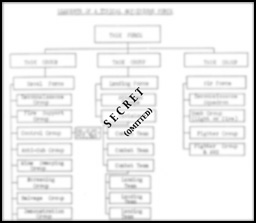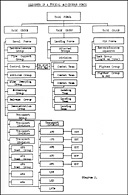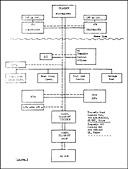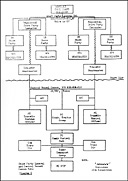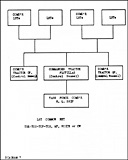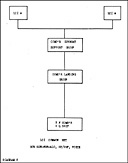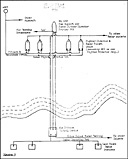| 0 |
(L) |
V |
I |
| 00 |
R |
J |
T |
| 5 |
D |
(X) |
M |
| 1 |
W |
N |
C |
| 2 |
K |
G |
|
| (3) |
E |
Q |
|
| 4 |
Z |
B |
|
| 6 |
H |
F |
|
| 7 |
O |
U |
|
| 8 |
S |
P |
|
| 9 |
A |
Y |
|
The last group of the message is L3X9T. L,3, and X are used for
deriving the Authenticator. L is bounded by R,J and V. 3 is
bounded by K,E and Z. X is bounded by R,J,T,M,C,N,W and D. One
of the possible Authenticators is RZW, and would appear as follows:
----(TEXT)----LR49N T6OFL L3X9T BT 1145Z QKA
RZW K
(QKA -- Authentication this message is __________)
(QLA -- Authenticate your message.)
Voice Authentication should be made as follows:
"Hello Pebble This is Rock Break How Hour Postponed to Shackle Love
Sugar Jig Break X R A Y
V I C T O R Q U E E N Over"
-
When last group of text contains only two characters (or one
character), make up authenticator using the last character (or
two characters) of the next to last group of text as required to
form a three letter authenticator.

